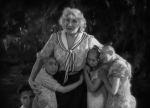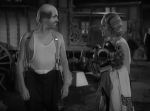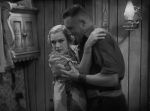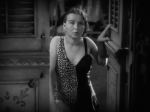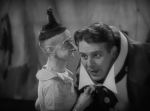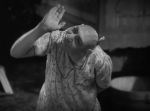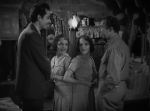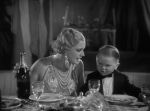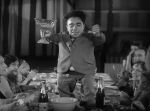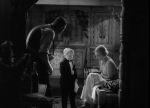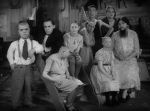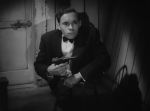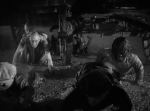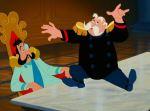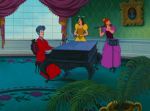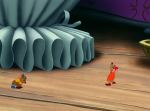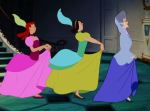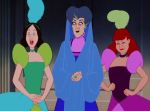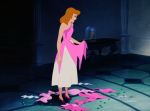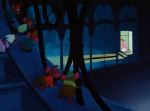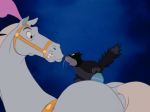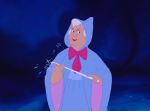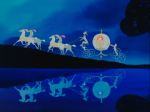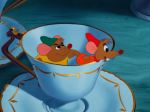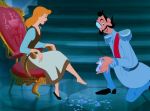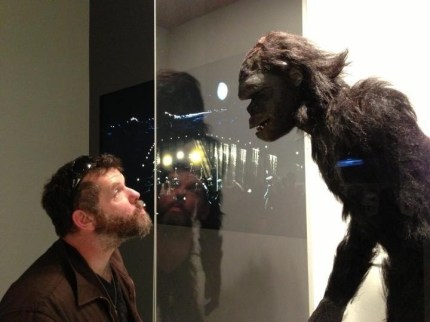Today’s cinema adventure: Freaks, the infamous 1932 film by director Tod Browning, about- and starring- the disfigured performers of a circus sideshow; controversial from the moment of its release and still disturbing today, it was lambasted by critics who found it repugnant, and was quickly pulled from circulation after provoking public shock and moral outrage. Considered an affront to decency, it was barred from exhibition in many U.S. states and in countries around the world, and effectively ended the career of a director who had been one of Hollywood’s most respected talents; nevertheless, over the ensuing decades it gained a reputation- no doubt enhanced by its lack of ready availability- and became, in the ’60s and ’70s, a cult favorite, frequently screened as a midnight movie despite the fact that many of the prohibitions against it were still in place, making it technically illegal to be shown in many states. Its rediscovery led to a critical re-evaluation, and today (thanks to modern society’s more enlightened, less reactionary view of its subject matter) it is widely regarded as a genuine classic, a brave and truly unique piece of filmmaking and a seminal influence within the horror genre.
The story takes place entirely within the insular world of a traveling circus, focusing on the day-to-day existence and relationships of its cast- particularly the collection of malformed misfits that comprises its sideshow, which includes dwarfs and midgets, “pinheads,” conjoined twins, a legless boy, a human torso, and numerous other bizarrely-shaped and differently-abled individuals who, despite their deformities, enjoy a comfortable and seemingly pleasant existence within the rarified environment of the circus, living together in a tightly-knit community with its own sort of exclusivity- as well as its own unwritten code that governs their interaction with the outside world. One of their number, a midget named Hans (who has recently become engaged to Frieda, another little person in the troupe), has become obsessed with the “normal” Cleopatra, the show’s new trapeze artist, an exotic beauty who indulges his attentions with flirtation and flattery; privately, however, she is only amused by his affections, making cruel fun of him with her real lover, the circus’ opportunistic strongman, Hercules. Though warned by his fellow “freaks” that she is not sincere, Hans continues to pursue Cleopatra, eventually spurning his fiancée for her; she humors him in order to take advantage of the lavish gifts he gives her, and when she discovers that he is secretly the heir to an enormous fortune, she and Hercules decide to steal it for themselves. She concocts a plan to marry the little man so that she can become his beneficiary, and then slowly poison him, making his death seem due to illness and allowing her to claim the money and run away with the strongman. At their wedding feast, however, she becomes drunk, reacting with disgust when the freaks attempt to accept her as one their own and inadvertently revealing her affair with Hercules. Though she is seemingly able to allay the suspicions of her new husband- who has grown weak from the poison she has already begun to administer- the other sideshow performers are onto her scheme, and they resolve to take matters- and justice- into their own hands.
Director Tod Browning had spent his early youth in the circus (which he had run away from his privileged family to join) where he had formed a strong connection to the specialized society of its inhabitants; when he encountered the short story, Spurs, by Tod Robbins, he immediately knew he wanted to use it as the basis for a film. He had built an impressive career as a director of silent films, making a name for himself through his extensive collaboration with renowned horror star Lon Chaney, with whom he created a number of classic films known for not only their moody eeriness, but for their remarkable level of humanity; after continuing his success into the sound era (as the director of Dracula, the 1931 hit which made a star of Bela Lugosi), he was able to convince MGM Studios- with whom he had worked on the Chaney films- to allow him to develop a film based on Robbins’ story. Though the studio had serious reservations, production head Irving Thalberg gave Browning his full support, even in his decision to use real sideshow performers in the film instead of actors in makeup. Consequently, working from a screenplay that combined basic elements from the original story with the concocted plot of Cleopatra’s treachery, as well as episodes inspired by his own experiences in the circus, Browning was able to realize his dream project.
In the end, he may have wished he had not; his use of genuinely deformed actors caused an outcry from public and critics alike, who felt their presence made the film far too disturbing to watch. Worse yet, Browning was accused of exploiting these unfortunates for his own profit, much in the way that real-life carnivals and sideshows had done for years. Whether or not this was true, the film’s preview screenings were a disaster, with audience response so vehemently negative- and one female patron threatening to sue MGM over a miscarriage supposedly brought on by the movie- that the studio edited out 30 minutes of the most upsetting footage before its general release, leaving it with a running time scarcely over an hour. Even with these cuts, a new prologue, and a more upbeat happy ending tacked on for good measure, Freaks was a failure at the box office; not only did it fail to make back its cost, it generated so much negative publicity for the studio that, after a short release, they pulled it from theaters and put it on the shelf- though it would later emerge in exploitative road show tours, under lurid-sounding titles such as Forbidden Love and Nature’s Mistakes, and sometimes accompanied by such titillating underground fare as amateur films of nudist camps. As for Browning, he was more or less blacklisted from making any more important movies, relegated to helming a few low-grade horror entries until he gave up his career in 1939, and he passed away in relative obscurity in 1962- just a few years before the resurgence of interest in classic horror films that would doubtless have restored his fame and reputation, never to see the day when a youthful counterculture would turn his greatest failure into his greatest triumph.
Calling Freaks a triumph, actually, might not be an apt description; it possesses a raw and unfinished quality that has nothing to do with the removal of so much footage (all of which is now, sadly, considered lost). Its story is sensationalistic, more a transposition of conventional melodrama into an unfamiliar setting than a real attempt at exploring this rarely-seen world, and it capitalizes on the irrational fears of the lowest common denominator to achieve its horrific effect. Despite these things, however, and perhaps even because of them, it has a unique power that makes it nearly as shocking today as it was 80 years ago; watching it is as difficult as it is fascinating, evoking a decided sense of seeing something you’re not supposed to see. It’s actually very easy to understand why audiences in 1932 would react so violently to Browning’s film, unaccustomed as they were to the kind of distorted imagery of the human body that has since been portrayed onscreen. Even today, thanks to advances in medical and nutritional science and the ready availability of pre-natal care which have made such dramatic and heartbreaking birth defects a much rarer occurrence, the sight of all these non-CG-enhanced distortions of physical humanity is more than a little unsettling. The real power of Freaks, though, is only apparent for those who can get past the deliberate gross-out factor of its surface and invest themselves in its story, the clear message of which is that true ugliness lies not in physical appearance but in the soul. Without exception, the so-called freaks are good-natured, trusting, generous and sweet (though Hans may be blinded by desire into making some foolish choices); it is the “normals” who are the real monsters here, with Cleopatra’s gold-digging cruelty and Hercules’ brutish arrogance making them truly among the most loathsome villains in classic cinema. Of course, it would be contrary to Browning’s message to make all of the normal characters so unpleasant; the others exhibit varying degrees of likability, in terms of their relation to the freaks, from the uncharitable but relatively benign attitudes of the circus’ tumblers (a decidedly non-athletic-looking pair, incidentally, to be holding such a job) to the kindness and total acceptance offered by the film’s ostensible romantic leads, the lovely seal-trainer Venus and her clown boyfriend Phrozo, who even risk their own safety to come to the aid of their oddly-shaped friends. Though the narrative approach is simplistic and heavy-handed, the black-and-white morality is part of what makes it work; it should be obvious that true humanity exists under the skin, having nothing to do either with physical beauty or the lack of it, and it is one of the defining characteristics of the insensitive and the mean-spirited that they neither see nor care about this basic truth- they are, in fact, the real “freaks” in this story, the unnatural evil that must be weeded out in order to restore harmony. It is a testament to Browning that he makes their comeuppance both horrific and immensely satisfying, accomplishing the somewhat Hitchcockian feat of transferring audience identification to the perpetrators of violence in order to underscore his subversive point.
Freaks does not dwell entirely in the dark and moralistic realm of its main plotline; throughout the film are vignettes, many of them drawn from Browning’s real-life memories of his own years in the circus, of existence in the sideshow world. It’s a place where, despite the extraordinary nature if its inhabitants, the details of daily life are mundanely familiar- Frieda the midget having girl talk with Venus while hanging laundry, lovers’ politics between the conjoined twins and their paramours (both of whom are, by the way, normals), the joyful bedside gathering of friends when the bearded lady gives birth- and go a long way towards endearing us to the misshapen cast of characters. Some of these moments are played for laughs hinging on the idea of these outwardly strange individuals behaving like average people (a conceit which, though likely very true to real life, was also a staple of the sideshow and vaudeville acts in which they performed); others are touching and revelatory, such as the early scene in which a landowner stumbles upon Madame Tetralini, the sideshow’s “headmistress,” accompanying several of her more drastically deformed charges on an outing in the woods. A few of these sequences awaken a genuine sense of wonder and open a window into these unusual lives, such as the famous scene when Prince Randian, the “Human Torso,” expertly lights a cigarette using only his mouth or, most particularly, when a passionate kiss bestowed on one of the conjoined sisters sends a tingling wave of arousal through her twin. These humanizing moments, some of them unforgettable, contribute to the effects of the well-known scene of Hans and Cleo’s wedding feast; we feel the infectious joy of their raucous celebration- sharing in the fun of Koo-Koo the Bird Girl dancing on the table rather than experiencing the appalled reaction of an uninitiated gawker, respecting the true generosity of their chanted ritual of acceptance for the new bride (“Gooble-gobble, Gooble-gobble, One of Us, One of Us!”) instead of cringing at its seemingly ominous implications, and recognizing Cleopatra and Hercules’ drunkenly flagrant contempt and disrespect for their hosts as the deep affront that it is rather than identifying with it. For the film’s harrowing climax, however, though these efforts to bond us with the freak community may allow us to be on their side, our sympathy does nothing to alleviate the sheer visceral terror they evoke when we see them lurking in the shadows or crawling slowly but inexorably towards their helpless quarry. This is Browning’s true mastery coming to its fruition- he helps us to subdue our instinctive and primordial fears around these outwardly disturbing figures and then brings those fears to life for us in a way which simultaneously repulses and elates us. In this way, he offers a film which transcends its own morality to deliver a pure, non-intellectualized reaction, and one which has rarely been matched, let alone surpassed.
As disquieting as this famous climactic sequence may be, modern audiences will only be able to imagine what it was once like. Following the film’s overwhelming rejection by preview audiences, MGM made Browning cut a large portion of it; the original version featured the brutal castration of Hercules and included a lengthy and graphic mutilation of Cleopatra by the vengeful freaks. There was also a longer version of the sideshow epilogue, in which the former strongman was seen on display, singing soprano, before the final revelation of the once-beautiful Cleopatra transformed into a grotesque duck woman- webbed feet, feathers and all. This latter image, of course, remains in the film, no less disturbing for its lack of logical explanation, and justly infamous for its sheer audacious shock value. It was meant to be the final moment, a lingering horror to send the audience home to their personal nightmares; in most existing prints of the movie, however, it is followed by a short finale- hurriedly filmed after the cuts were made, in hopes of leaving audiences on a more hopeful note- which shows the reconciliation of little Hans and his faithful Frieda, a pleasant enough conclusion, but juxtaposed against what we have just witnessed, one that feels a little hollow.
In terms of its production values, Freaks was a fairly high-budget project, and it shows. Many of its scenes were shot on location (that is to say, outdoors) giving it an expansive, realistic feel that is missing in many of the more set-bound films of this early talkie period. The cinematography (by Merritt B. Gerstad) is a masterpiece of chiaroscuro black-and-white moodiness, and the artistic design captures the authenticity of its circus setting in all its rough-edged, seedy glamour. As for the acting, the “normal” cast all deliver perfectly acceptable performances in the somewhat stagy, melodramatic style of the day, with Olga Baclanova appropriately standing out as the flamboyantly callous and deceitful Cleopatra. The specialty players, though all were seasoned performers in the real-life sideshow and vaudeville circuit, were not trained actors; even so- though their delivery is sometimes stilted, their diction often indecipherable, and their characterizations generally simplistic- they are so genuinely themselves that they win us over with the power of sheer personality. This is especially true in the case of some of the more profoundly compromised actors, such as the microcephalics (“pinheads” being the less-sensitive but more commonly-known term)- particularly “Schlitzie,” (in real life, despite the dress, a man named Simon Metz), whose infectious charm practically leaps off the screen- and those others affected by especially severe genetic defects. Also memorable are Johnny Eck (the legless boy, a handsome and particularly gifted performer who was well-known and popular in Vaudeville), the aforementioned Prince Randian, and Violet and Daisy Hilton (the Siamese twins, also well-established as entertainers offscreen and later the subject of two stage musicals and an acclaimed documentary). In many cases, these performers continued to work and thrive for many years after their appearance in Freaks (though with the decline of vaudeville many of them eventually faded into obscurity); indeed, one of the movie’s prominent dwarfs, Angelo Rossitto, went on to enjoy a long career as a film actor, culminating in his appearance as the key character of “Masterblaster” (or, at least, the “Master” half) in the 1985 action/sci-fi fantasy, Mad Max Beyond Thunderdome.
For most casual audiences, the most important question is this: does Freaks live up to its reputation? My answer is an enthusiastic “Yes!” Truncated and brightened-up as it may be, Freaks is still a powerful film experience, one which achieves the rare objective of truly forcing the audience to confront its own level of humanity. It’s hard not to feel compassion for these examples of nature gone wrong, but Browning’s film makes it clear that it is not our pity that matters- rather it is our acceptance. Pity is another form of judgment, after all, no different perhaps than the less charitable attitude of dismissive contempt exhibited by the film’s scheming villains; it is based on a presumption of inferiority, and even of powerlessness- a presumption Cleopatra and Hercules, to their misfortune, discover to be very much mistaken. Browning’s movie, for all its deliberate creepiness and sensationalism, is ultimately a powerful reminder of the old admonishment not to judge anything- or anyone- by appearances, and more than that, a strong plea for tolerance and equality. The circus, after all, is a classic metaphor for the world itself, and the sideshow freaks stand in for all those social misfits who are outcast for their differences. It is no wonder that Freaks was rescued from cinematic oblivion by the counterculture of the ’60s, and has been embraced ever since by those who, for whatever reason, stand apart from mainstream culture and disdain the shallow hypocrisy they see there; the appeal is obvious to anyone who has ever felt shut out because of who or what they are- and which of us can say they’ve never felt that? Freaks, then, is a parable that validates the disenfranchised. It also (to borrow a phrase) comforts the disturbed and disturbs the comfortable, which it’s probably fair to say is what Tod Browning set out to do with his magnum opus. Though it may have cost him his future, I’m sure it would be some consolation for him to know that, even if it did take decades to happen, he is dearly appreciated for having succeeded.
http://www.imdb.com/title/tt0022913/




